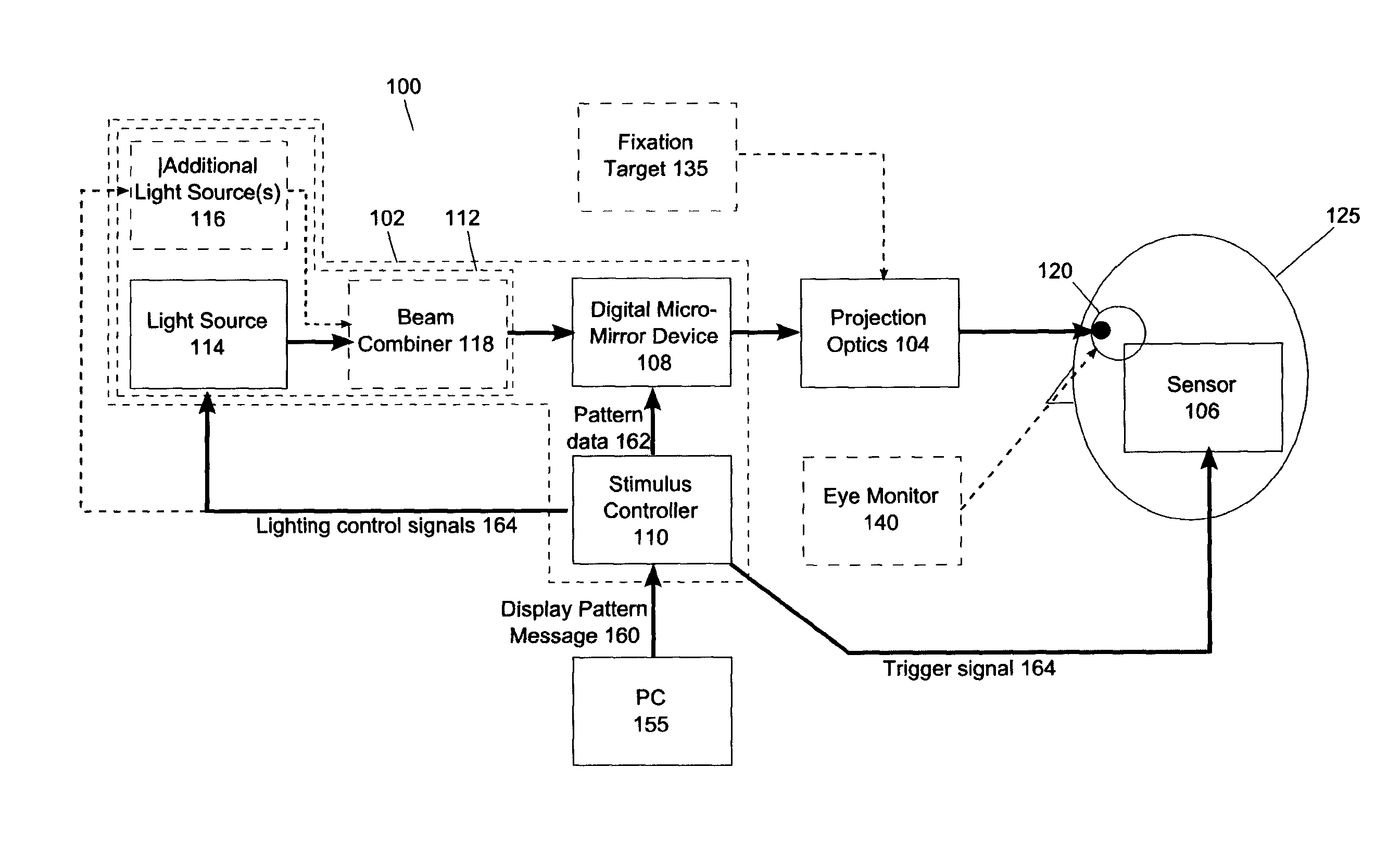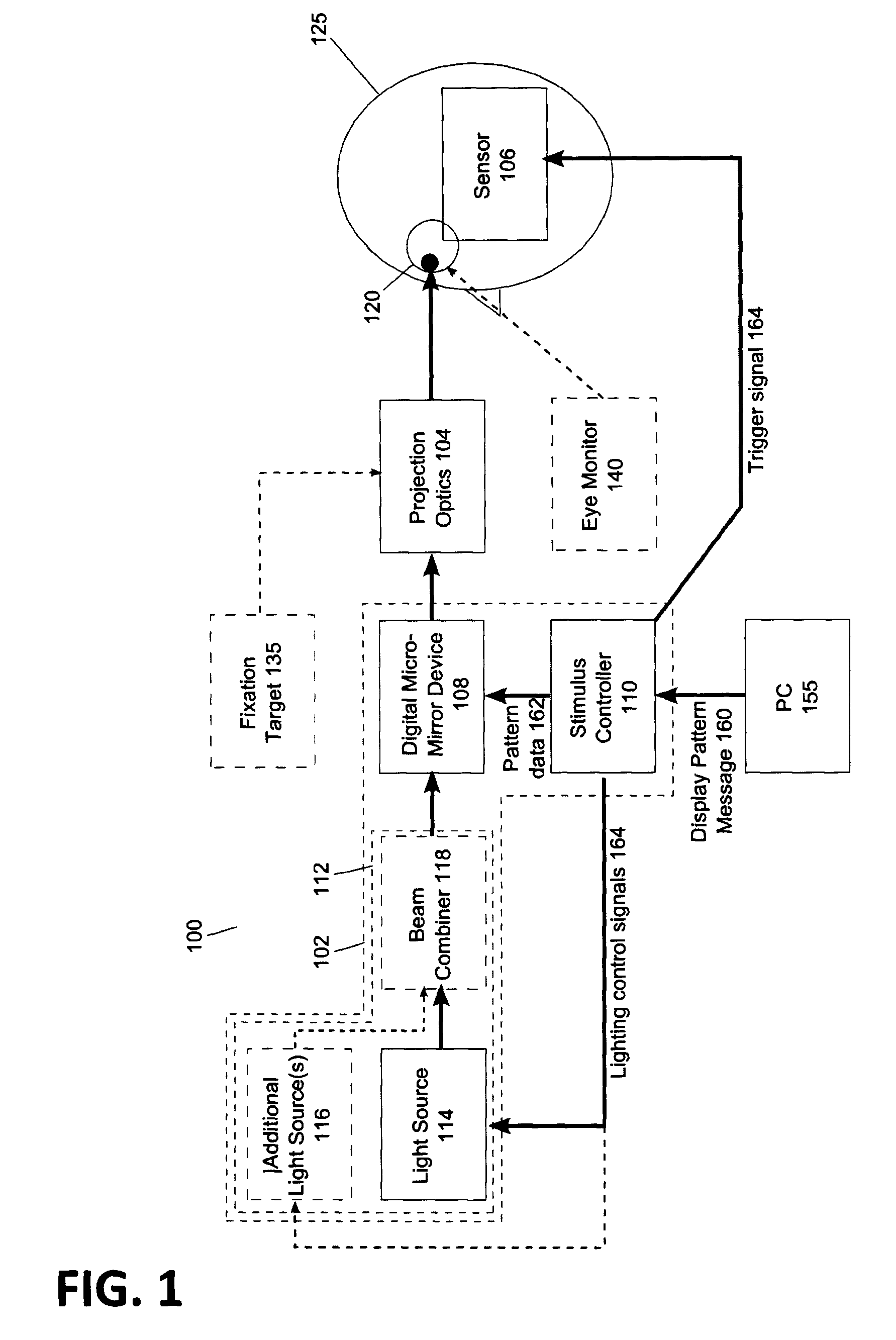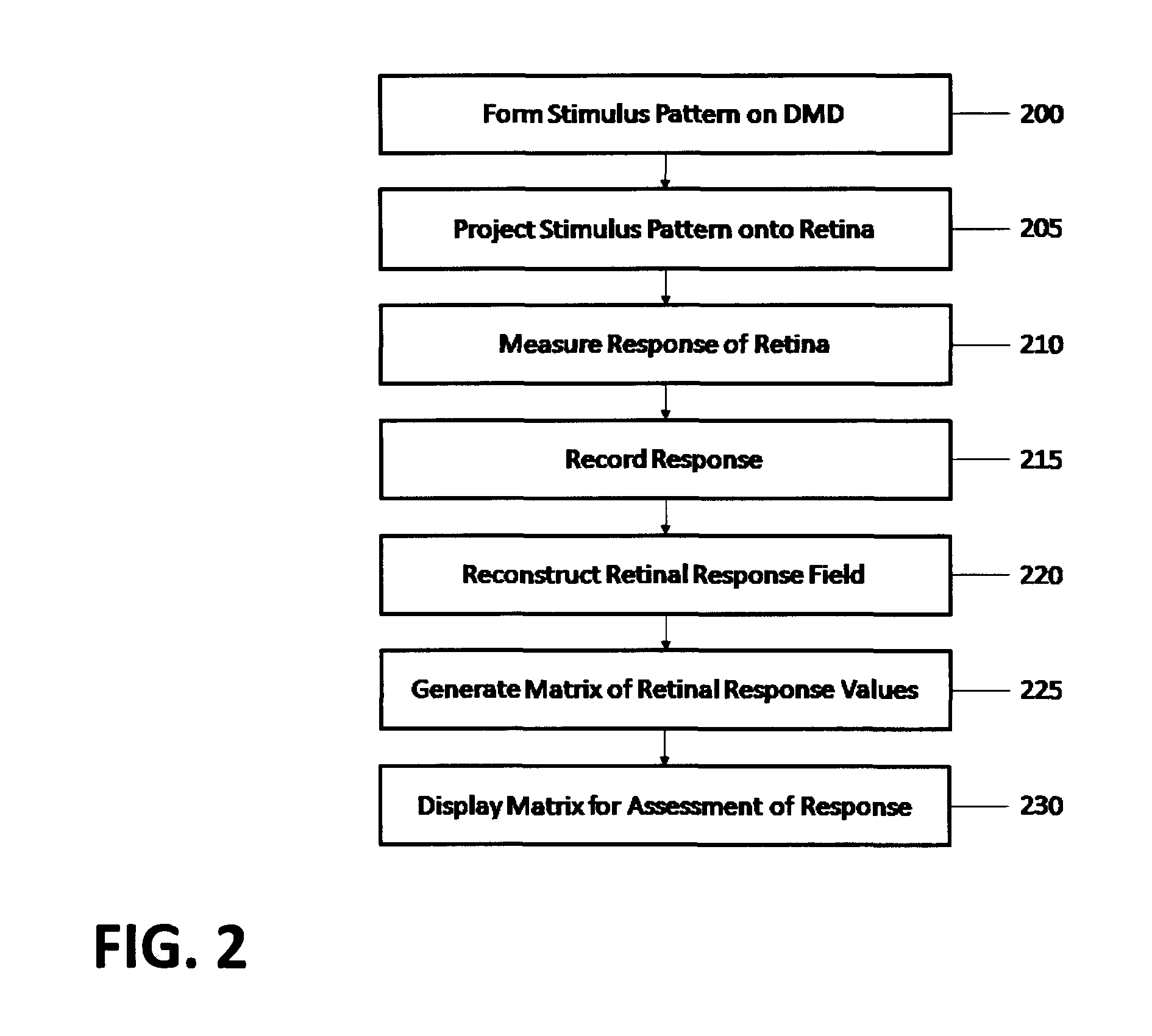System and method for assessing retinal functionality
a retinal function and functional assessment technology, applied in the field of retinal functional assessment systems and methods, can solve the problems of not entirely satisfactory, declining commercial availability of crts, and alternatively not entirely suitable for use in optical stimulators, and achieve the effect of reducing the deficiencies of such known optical stimulators
- Summary
- Abstract
- Description
- Claims
- Application Information
AI Technical Summary
Benefits of technology
Problems solved by technology
Method used
Image
Examples
Embodiment Construction
[0063]FIG. 1 illustrates a specific embodiment of a system 100 for assessing retinal functionality. The system 100 comprises an optical stimulator 102 (was 105, 145, 150, 110) for producing one or more stimulus patterns to input light, projection optics 104 (115) for projecting images of the stimulus pattern(s) onto a retina of an eye 120 of a subject 125 and a sensing unit 106 (was 130) for sensing responses evoked by the stimulus images.
[0064]As shown, the optical stimulator 102 comprises a DMD device 108 having an array of micro-mirrors (not shown) which can be switched individually in response to control signals from a controller 110. Input light for irradiating the array of micro-mirrors is provided by a light input unit 112 which comprises a light source 114 (was 105), for example a LED, coupled to the DMD device 108. Optionally, the light input unit 112 may comprise one or more additional light sources for emitting light having a different wavelength to that emitted by light ...
PUM
 Login to View More
Login to View More Abstract
Description
Claims
Application Information
 Login to View More
Login to View More - R&D
- Intellectual Property
- Life Sciences
- Materials
- Tech Scout
- Unparalleled Data Quality
- Higher Quality Content
- 60% Fewer Hallucinations
Browse by: Latest US Patents, China's latest patents, Technical Efficacy Thesaurus, Application Domain, Technology Topic, Popular Technical Reports.
© 2025 PatSnap. All rights reserved.Legal|Privacy policy|Modern Slavery Act Transparency Statement|Sitemap|About US| Contact US: help@patsnap.com



